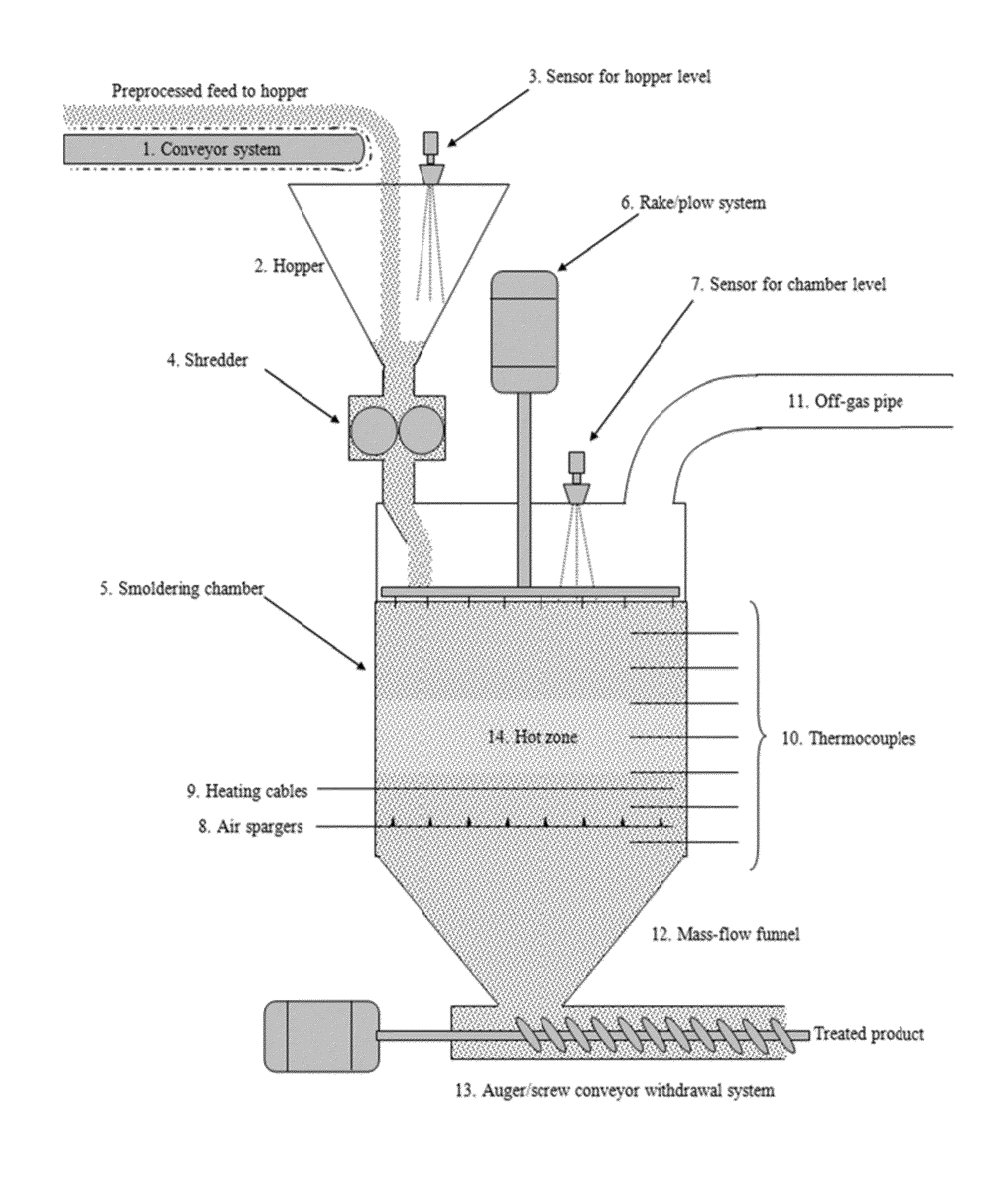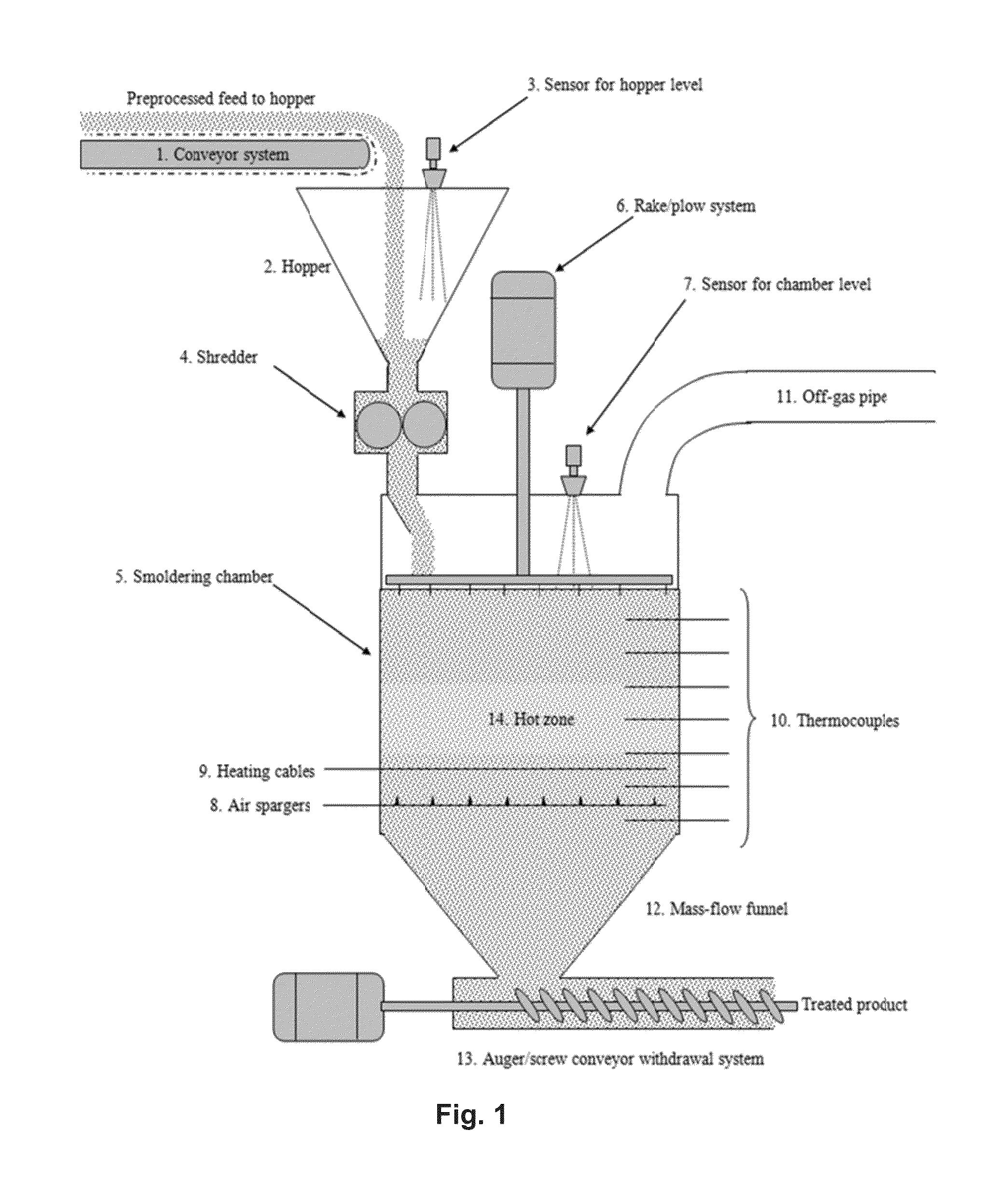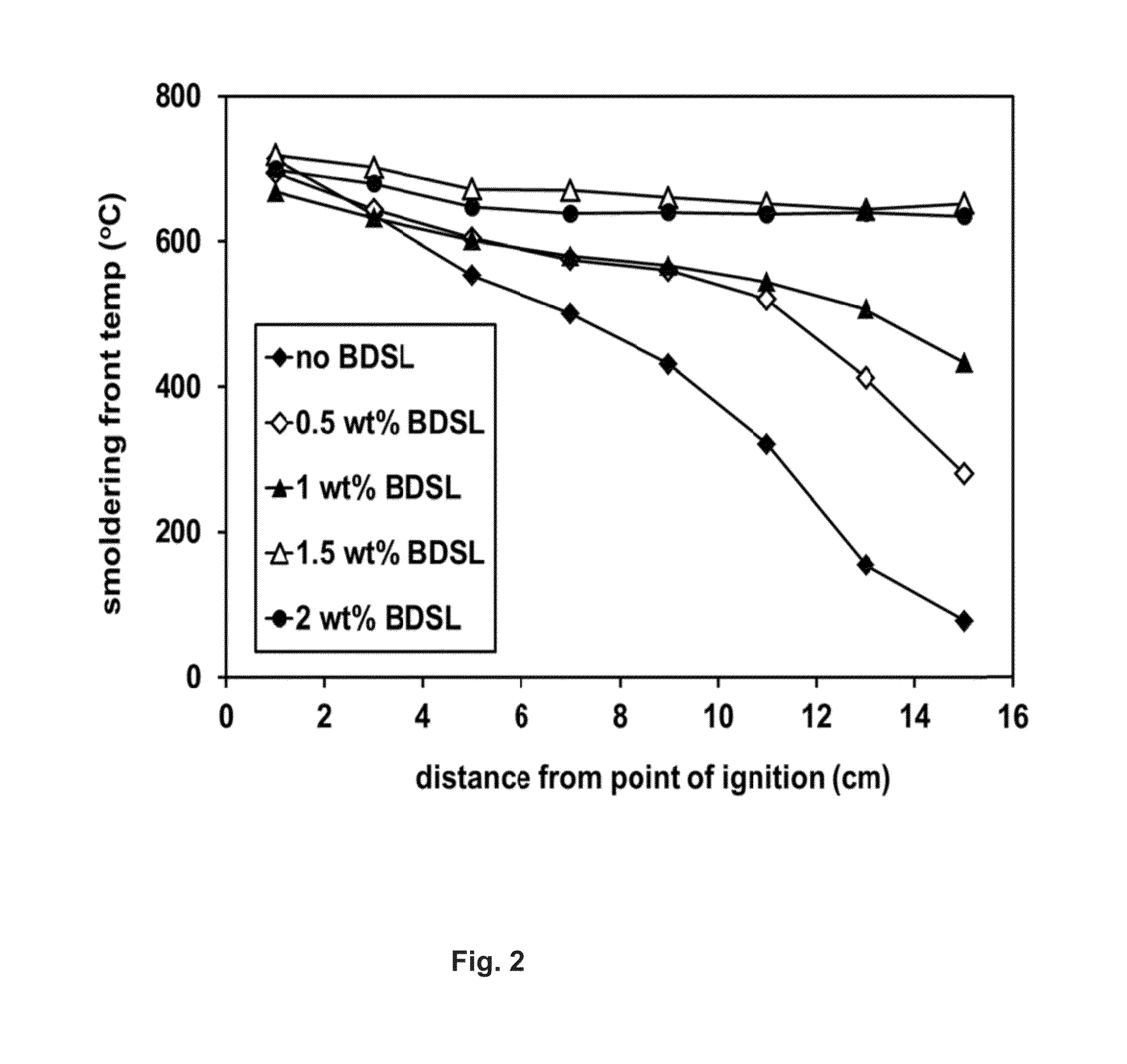Remediation of contaminated particulate materials
a technology of particulate materials and contaminated materials, which is applied in the direction of combustion types, lighting and heating apparatus, incinerator apparatus, etc., can solve the problems that the level of organic contaminant concentration of the fuel with insufficient levels of the fuel may still be considered contaminated according to regulatory standards, and achieves the effects of increasing the fuel content, promoting smoldering, and increasing cost-effectiveness
- Summary
- Abstract
- Description
- Claims
- Application Information
AI Technical Summary
Benefits of technology
Problems solved by technology
Method used
Image
Examples
example 1
[0042]Biodiesel (“BDSL”) was added to soils at concentrations between 0 and 2 weight percent and the prepared soils were subject to benchtop smoldering tests as described above. The temperature profiles (FIG. 2) show how the addition of biodiesel to the soil causes a transition from an unsustainable process (smoldering front cools as it moves up the soil column) to a self-sustaining one at 1.5 weight percent biodiesel (smoldering front temperatures stabilize above 600° C.). The soil analysis (FIG. 3) demonstrates that adding sufficient biodiesel to the soil to achieve a self-sustaining process allows for effective removal of soil hydrocarbons in the range of C16-C34, which includes the added biodiesel.
example 2
[0043]Humalite (“Hum”), a material rich in humic acids, was mixed into soils at concentrations between 0 and 3 dry weight percent. The prepared soils then underwent benchtop smoldering tests as described above, which demonstrated that the addition of 1.5 dry weight percent humalite was sufficient to establish self-sustaining smoldering (temperatures stabilize near 600° C. as the front moves up the soil column). In addition, increasing the concentration of humalite to 3 dry weight percent increased the stable front temperature to about 700° C., which would enhance contaminant oxidation and reduce harmful emissions. The results are shown graphically in FIG. 4.
example 3
[0044]As demonstrated by fireflooding, a smoldering front not only destroys hydrocarbons, but mobilizes them. A benchtop smoldering experiment with an oil-contaminated soil sample showed that some oil migrates ahead of the smoldering combustion front (into a layer of ceramic beads in the experiment). This migration may complicate an in situ application, as contaminants can accumulate at the periphery of the treatment area. Such contaminant “halos” could even require subsequent ex situ treatment or disposal. In the continuous ex situ system, outward migration of organic contaminants is limited by the walls of the chamber, which can be insulated to maximize combustion, and volatile contaminants can be captured by the air emissions control system. Since non-volatile contaminants cannot effectively escape the hot zone, a larger proportion may be destroyed.
PUM
 Login to View More
Login to View More Abstract
Description
Claims
Application Information
 Login to View More
Login to View More - R&D
- Intellectual Property
- Life Sciences
- Materials
- Tech Scout
- Unparalleled Data Quality
- Higher Quality Content
- 60% Fewer Hallucinations
Browse by: Latest US Patents, China's latest patents, Technical Efficacy Thesaurus, Application Domain, Technology Topic, Popular Technical Reports.
© 2025 PatSnap. All rights reserved.Legal|Privacy policy|Modern Slavery Act Transparency Statement|Sitemap|About US| Contact US: help@patsnap.com



